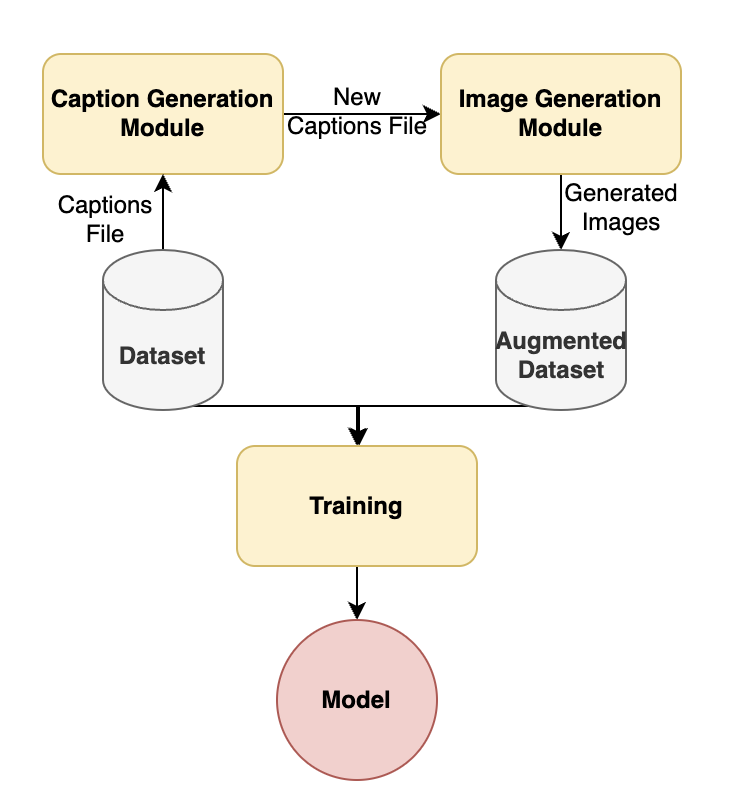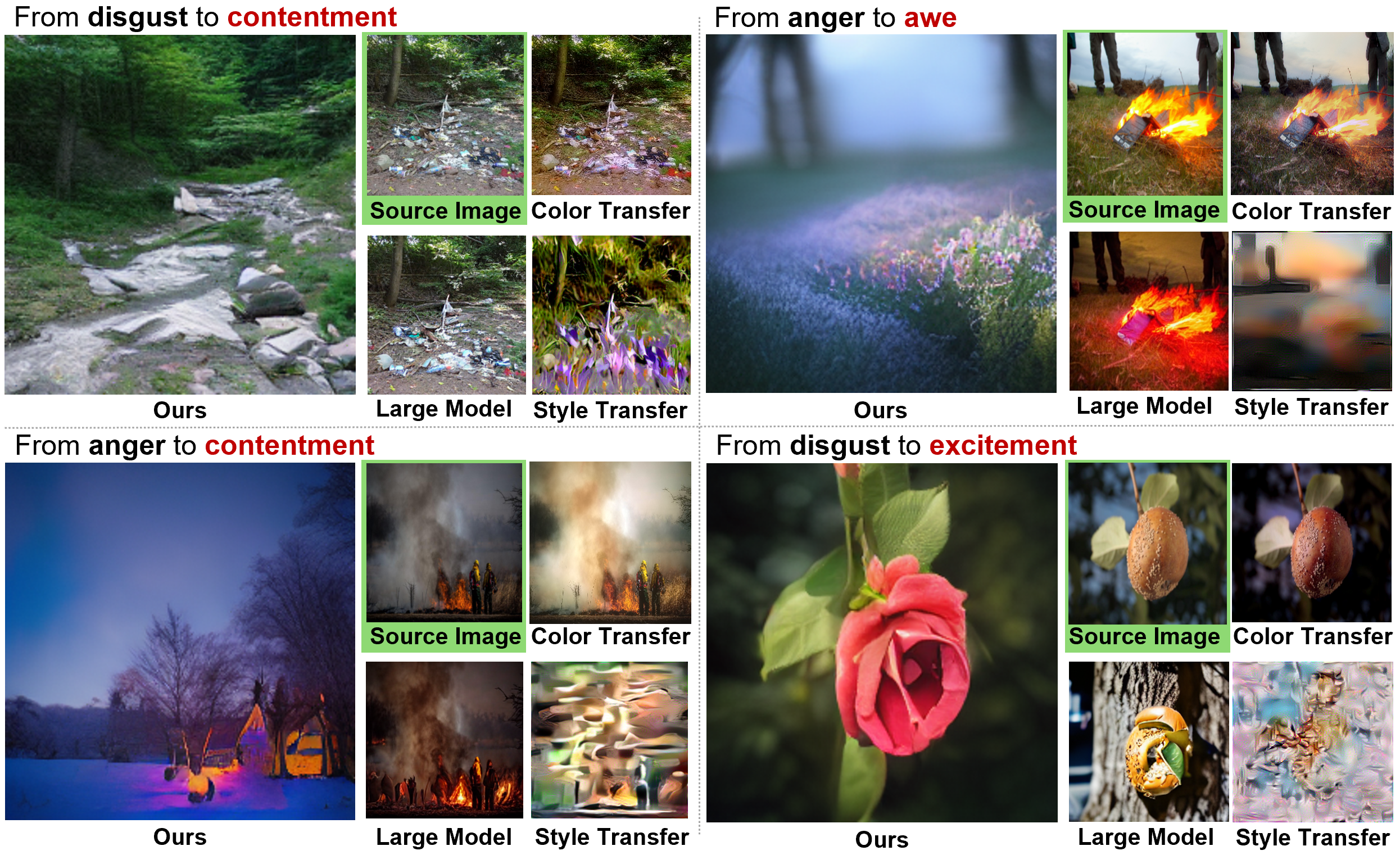Semantica: An Adaptable Image-Conditioned Diffusion Model
2405.14857

0
0
📈
Abstract
We investigate the task of adapting image generative models to different datasets without finetuneing. To this end, we introduce Semantica, an image-conditioned diffusion model capable of generating images based on the semantics of a conditioning image. Semantica is trained exclusively on web-scale image pairs, that is it receives a random image from a webpage as conditional input and models another random image from the same webpage. Our experiments highlight the expressivity of pretrained image encoders and necessity of semantic-based data filtering in achieving high-quality image generation. Once trained, it can adaptively generate new images from a dataset by simply using images from that dataset as input. We study the transfer properties of Semantica on ImageNet, LSUN Churches, LSUN Bedroom and SUN397.
Create account to get full access
Overview
- This paper investigates a method for adapting image generative models to different datasets without fine-tuning.
- The authors introduce Semantica, an image-conditioned diffusion model that can generate new images based on the semantics of a conditioning image.
- Semantica is trained exclusively on web-scale image pairs, where it receives a random image from a webpage as conditional input and models another random image from the same webpage.
- The experiments highlight the expressivity of pre-trained image encoders and the necessity of semantic-based data filtering in achieving high-quality image generation.
- Once trained, Semantica can adaptively generate new images from a dataset by simply using images from that dataset as input.
- The transfer properties of Semantica are studied on ImageNet, LSUN Churches, LSUN Bedroom, and SUN397 datasets.
Plain English Explanation
Semantica is a new type of image generation model that can create new images based on the meaning or "semantics" of a given image. Unlike traditional image generation models that require extensive fine-tuning on specific datasets, Semantica is trained on a large, diverse set of web-scale image pairs. This means it learns to generate images that are semantically related to the input image, without needing to be retrained for each new dataset.
The key insight is that pre-trained image encoders, which are algorithms that can understand the meaning of an image, are surprisingly expressive and can be leveraged for this task. Additionally, the researchers found that carefully filtering the training data based on the semantic relationships between the image pairs was crucial for achieving high-quality image generation.
Once trained, Semantica can be used to generate new images from a wide range of datasets, simply by using images from that dataset as input. This is a powerful capability, as it allows the model to adapt to new domains without extensive retraining. The researchers tested Semantica on several popular image datasets, including ImageNet, LSUN Churches, LSUN Bedroom, and SUN397, and found it performed well in generating novel images.
Technical Explanation
The core of Semantica is a diffusion-based generative model that is conditioned on input images. Diffusion models are a type of generative model that work by gradually adding noise to an image and then learning to reverse the process to generate new images.
In the case of Semantica, the model is trained on a large dataset of web-scale image pairs, where each pair consists of a random image from a webpage and another random image from the same webpage. The model learns to generate the second image in the pair based on the semantics of the first image, without any additional labeling or annotation.
The key technical insights are:
- Pre-trained image encoders are highly expressive and can capture the semantic relationships between images, even without fine-tuning.
- Carefully filtering the training data based on the semantic similarity between the image pairs is crucial for achieving high-quality image generation.
Semantica is then evaluated on its ability to generate novel images from several popular image datasets, including ImageNet, LSUN Churches, LSUN Bedroom, and SUN397. The results demonstrate the model's strong transfer learning capabilities, as it is able to generate high-quality images without any fine-tuning on the target datasets.
Critical Analysis
The Semantica paper presents a promising approach for adapting image generation models to new domains without the need for extensive fine-tuning. However, there are a few potential limitations and areas for further research:
-
The reliance on web-scale image pairs for training may limit the model's ability to capture more nuanced or complex semantic relationships that are not readily available in web-crawled data. Exploring other data sources or methods for data augmentation could be an area for improvement.
-
The paper does not provide a detailed analysis of the types of images the model is able to generate or the specific semantics it has learned. A more in-depth evaluation of the model's capabilities and limitations would be valuable.
-
The transfer learning experiments are conducted on relatively broad and diverse datasets, but it would be interesting to see how the model performs on more specialized or challenging datasets, such as domain-specific image segmentation tasks.
-
The paper does not address potential issues around biases or ethical considerations in the generated images, which is an important area for further research in generative models.
Overall, the Semantica paper presents an exciting and innovative approach to image generation, and the authors' findings on the expressivity of pre-trained image encoders are particularly noteworthy. As the field of generative models continues to evolve, it will be important to explore these types of transfer learning and domain adaptation techniques to make these models more flexible and widely applicable.
Conclusion
The Semantica paper introduces a novel image-conditioned diffusion model that can generate new images based on the semantics of a conditioning image, without the need for extensive fine-tuning on specific datasets. The key insights are that pre-trained image encoders are highly expressive and can capture semantic relationships, and that careful data filtering is crucial for achieving high-quality image generation.
The ability of Semantica to adaptively generate new images from a wide range of datasets, simply by using images from that dataset as input, is a significant advancement in the field of generative models. This has important implications for the flexibility and applicability of these models, as they can be more easily deployed in diverse real-world scenarios without the need for resource-intensive retraining.
As the research in this area continues to evolve, it will be important to address the potential limitations and ethical considerations highlighted in the critical analysis, and to further explore the capabilities and limitations of these types of semantic-based image generation models.
This summary was produced with help from an AI and may contain inaccuracies - check out the links to read the original source documents!
Related Papers

Semantic Augmentation in Images using Language
Sahiti Yerramilli, Jayant Sravan Tamarapalli, Tanmay Girish Kulkarni, Jonathan Francis, Eric Nyberg

0
0
Deep Learning models are incredibly data-hungry and require very large labeled datasets for supervised learning. As a consequence, these models often suffer from overfitting, limiting their ability to generalize to real-world examples. Recent advancements in diffusion models have enabled the generation of photorealistic images based on textual inputs. Leveraging the substantial datasets used to train these diffusion models, we propose a technique to utilize generated images to augment existing datasets. This paper explores various strategies for effective data augmentation to improve the out-of-domain generalization capabilities of deep learning models.
4/4/2024
📈
Semantic Approach to Quantifying the Consistency of Diffusion Model Image Generation
Brinnae Bent

0
0
In this study, we identify the need for an interpretable, quantitative score of the repeatability, or consistency, of image generation in diffusion models. We propose a semantic approach, using a pairwise mean CLIP (Contrastive Language-Image Pretraining) score as our semantic consistency score. We applied this metric to compare two state-of-the-art open-source image generation diffusion models, Stable Diffusion XL and PixArt-{alpha}, and we found statistically significant differences between the semantic consistency scores for the models. Agreement between the Semantic Consistency Score selected model and aggregated human annotations was 94%. We also explored the consistency of SDXL and a LoRA-fine-tuned version of SDXL and found that the fine-tuned model had significantly higher semantic consistency in generated images. The Semantic Consistency Score proposed here offers a measure of image generation alignment, facilitating the evaluation of model architectures for specific tasks and aiding in informed decision-making regarding model selection.
4/16/2024

StableSemantics: A Synthetic Language-Vision Dataset of Semantic Representations in Naturalistic Images
Rushikesh Zawar, Shaurya Dewan, Andrew F. Luo, Margaret M. Henderson, Michael J. Tarr, Leila Wehbe

0
0
Understanding the semantics of visual scenes is a fundamental challenge in Computer Vision. A key aspect of this challenge is that objects sharing similar semantic meanings or functions can exhibit striking visual differences, making accurate identification and categorization difficult. Recent advancements in text-to-image frameworks have led to models that implicitly capture natural scene statistics. These frameworks account for the visual variability of objects, as well as complex object co-occurrences and sources of noise such as diverse lighting conditions. By leveraging large-scale datasets and cross-attention conditioning, these models generate detailed and contextually rich scene representations. This capability opens new avenues for improving object recognition and scene understanding in varied and challenging environments. Our work presents StableSemantics, a dataset comprising 224 thousand human-curated prompts, processed natural language captions, over 2 million synthetic images, and 10 million attention maps corresponding to individual noun chunks. We explicitly leverage human-generated prompts that correspond to visually interesting stable diffusion generations, provide 10 generations per phrase, and extract cross-attention maps for each image. We explore the semantic distribution of generated images, examine the distribution of objects within images, and benchmark captioning and open vocabulary segmentation methods on our data. To the best of our knowledge, we are the first to release a diffusion dataset with semantic attributions. We expect our proposed dataset to catalyze advances in visual semantic understanding and provide a foundation for developing more sophisticated and effective visual models. Website: https://stablesemantics.github.io/StableSemantics
6/21/2024

Make Me Happier: Evoking Emotions Through Image Diffusion Models
Qing Lin, Jingfeng Zhang, Yew Soon Ong, Mengmi Zhang

0
0
Despite the rapid progress in image generation, emotional image editing remains under-explored. The semantics, context, and structure of an image can evoke emotional responses, making emotional image editing techniques valuable for various real-world applications, including treatment of psychological disorders, commercialization of products, and artistic design. For the first time, we present a novel challenge of emotion-evoked image generation, aiming to synthesize images that evoke target emotions while retaining the semantics and structures of the original scenes. To address this challenge, we propose a diffusion model capable of effectively understanding and editing source images to convey desired emotions and sentiments. Moreover, due to the lack of emotion editing datasets, we provide a unique dataset consisting of 340,000 pairs of images and their emotion annotations. Furthermore, we conduct human psychophysics experiments and introduce four new evaluation metrics to systematically benchmark all the methods. Experimental results demonstrate that our method surpasses all competitive baselines. Our diffusion model is capable of identifying emotional cues from original images, editing images that elicit desired emotions, and meanwhile, preserving the semantic structure of the original images. All code, model, and dataset will be made public.
5/28/2024